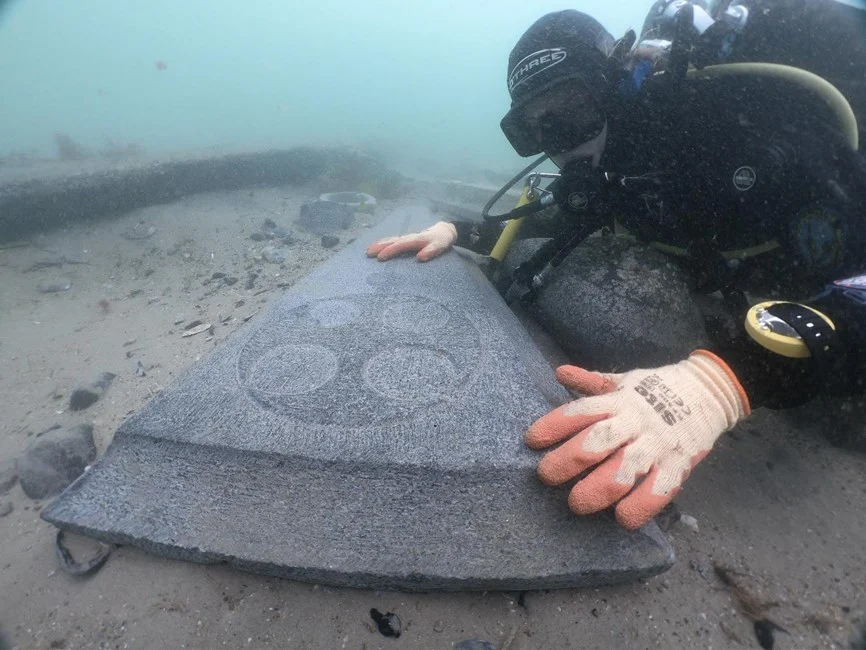Medieval shipwreck carrying preserved Purbeck limestone gravestones given highest level of protection
A 13th century shipwreck in Poole Bay, Dorset, has been found containing two complete Purbeck limestone gravestones in almost mint condition, including tooling marks. There is also a broken tombstone and other examples of Purbeck stone, including Purbeck Marble, which was widely used in British and European ecclesiastical buildings and stately homes during the medieval period.
Before this discovery, there were no known wrecks of seagoing ships from the 11th to the 14th century in English waters.
The wreck has been given the highest level of protection under the Protection of Wrecks Act 1973. It becomes the oldest of just 57 wrecks in English waters protected in this way.
Known as the Mortar Wreck, the surviving oak timbers of the clinker-built hull were felled in Ireland more than 750 years ago, making this the oldest known protected wreck in English waters where remains of the hull can still be seen. Irish oak was frequently exported for shipbuilding during the Medieval period.
Analysis of the timber with tree ring dating shows the trees were felled between the 1240s and 1260s, during the reign of King Henry III.
As more of the wreck is uncovered, more artefacts are expected to be found that could provide information about the winning and working of the limestone from Purbeck.
It is intended that finds from the ship will eventually go on display in one of Poole Museum's three new maritime galleries that are due to open in 2024.
The Mortar Wreck was discovered in Poole Bay in Dorset by Trevor Small, who has operated diving charters from Poole in Dorset for the past 30 years. Further research of the wreck has been carried out by Bournemouth University, which has made a video of its dives (see below).
Two other exceptionally well-preserved shipwrecks have also been protected under the Protection of Wrecks Act 1973 – the 16th century Shingles Bank Wreck NW96 and the 17th century Shingles Bank Wreck NW68, both discovered off the Needles Channel, Isle of Wight, by divers Martin Pritchard and Dave Fox.
The survival of pre-1700 ships is extremely rare, as is the unearthing of previously unrecorded wrecks in the Solent, where people have been diving for many years. That makes these discoveries nationally significant.
Historic England says the two Purbeck stone gravestones with different Gothic designs on them are like those found in churchyards across the South Coast of England. They are particularly significant because they were carved and not blank slabs, suggesting a high level of demand for skilled stonemasons and their products.
The fact that they contain two different designs is also relevant, as it had been assumed one of the designs followed the other, but this indicates both designs were used at the same time, possibly during a transitional period between the two.
Other finds on the Mortar Wreck include a large cauldron for cooking soup, a smaller cauldron, which would have once had a long handle, for heating water, and mugs covered in concretion (a hard mass that forms over objects underwater over time).
Historic England has been working closely with Bournemouth University and Trevor Small to investigate the Mortar Wreck. Historic England says it reveals a rich web of maritime trade using the English Channel and Irish Sea in this period.

